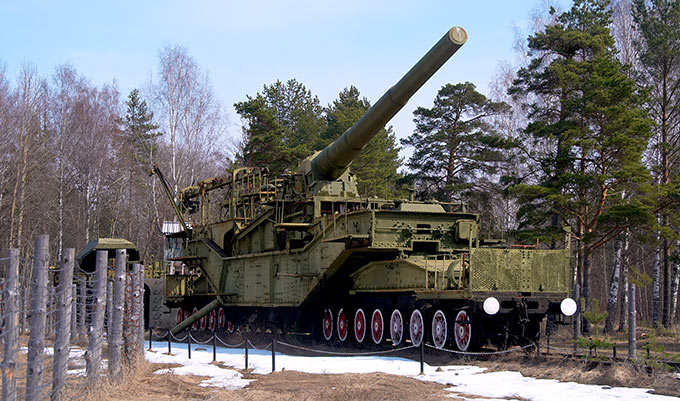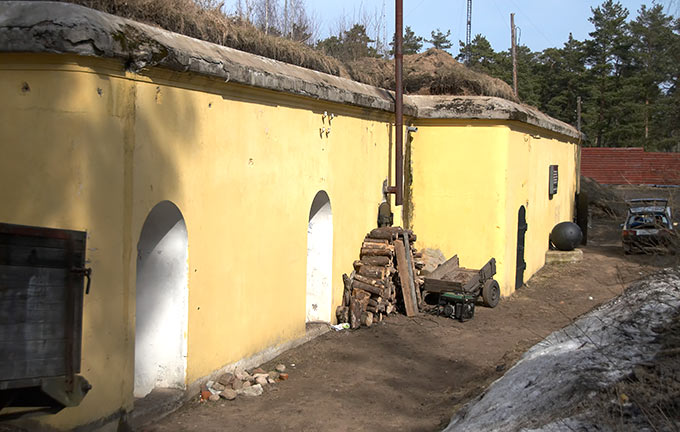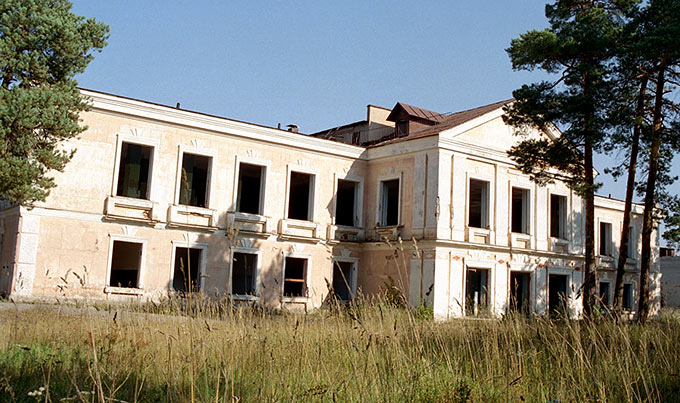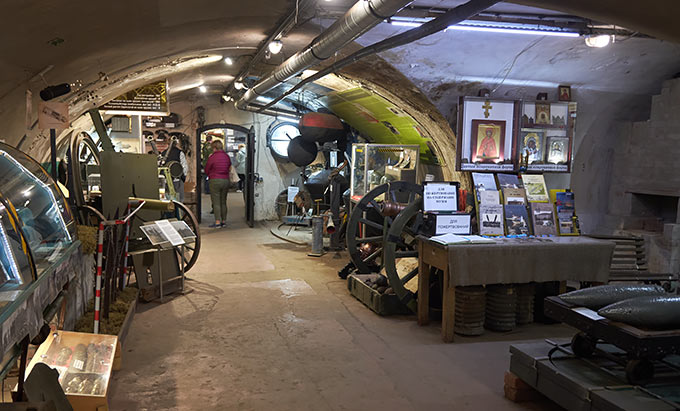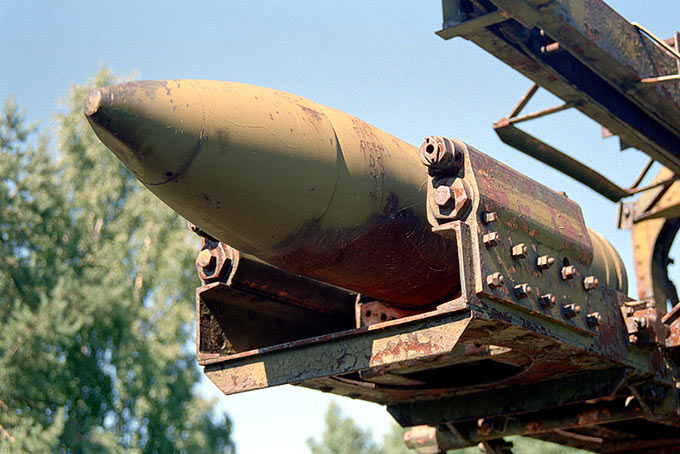History of Krasnaya Gorka fort (Alekseevsky)
Construction of Fort Krasnaya Gorka (Red Hill) was started in 1909 for defence of an entrance of Gulf of Finland.
The fort situated on high cliff upon Gulf of Finland and consists of rows of concrete gun emplacements. Railway connected the fort with Lebjazjee settlement. Fort "Seraya Loshadj" (Gray Horse) with it's 6-inches "Canet" guns battery and 120-mm Vikkers guns battery was constructed 8 km to the west. It was intended for covering the approaches to the main fort.
Armament of the fort was similar to armament of Fort Ino - the batteries of 8 11 inch howitzers, 8 10 inch "Brink" guns, 6 6 inch "Canet" guns and 8 12 inch guns (4 in one open battery and 4 in turrets battery. Artillery positions were connected by covered passages (poterns) and were surrounded (are surrounded till now days) with underground powder cellars, galleries, command points and shelters. There were the special railways for ammunition and shells supply also. The Fort was in combat readiness in 1915.
The fort did not take part in operations of WWI. In 1918 War Counsel of Bolsheviks Baltic Fleet issued order to mine the fort because of Whites assault. August 20, 1918 casual blast of powder cellars of two batteries ruined some installations of the fort.
In 1919 garrisons of Forts Krasnaya Gorka and artillery Seraya Loshad run anti Bolsheviks mutiny which was suppressed by bolsheviks with the help of warships of Baltic Fleet. Forts did not get any damage, but warships got several hits.
October 1919 the fort had artillery encounter with English battleship Erebus. In 1921 guns of Krasnaya Gorka bombarded Kronstadt (Kotlin island) during the famous mutiny.
During WWII Fort Krasnaya Gorka was a major part of defense of Oranienbaum bridge-head. The radius of action of its guns defined the range of German troop's progress. There were the special railways on the territory of the fort and around it for the railroad carriers (transporters) with large-caliber guns (356 and 180 mm) and two armour trains - "Baltietz" and "Za Rodinu".
After WWII, fort remained in the ranks till 1960 th (partially it is in the ranks till now days). Early 1960-th the fort was disarmed, all its guns and equipment was scarped. After that it was used as warehouses, and at last it was deserted partly.
In 1975 the war memorial was arranged on the fort and three guns (100, 130-mm and 6" Canet) were mounted on 6" battery. Later two railway guns TM-3-12 (12 inches) and TM-1-180 (180 mm) were added. In 1990 the fort was abandoned fully and memorial was sacked without remorse.
In 2006 remains of railway guns 6" and 10" batteries were fenced by barbed wire. 6" Canet and 100-mm gun disappeared. The 6-inch battery is dug out, there are mine-clearing works conducts now.
In 2012 the works at 6" and 10" batteries are finished and the batteries are accessible now. But there is a bad news t - some historic buildings on the fort were demolished, such as headquarter, canteen and club.
Impressions
Impression is very good! It is a very interesting place. But... I remember fortress Sveaborg and Savonlinna and Silpa-line museum (all are in Finland). They all are in a very good condition. But this fort... The cut and stolen iron details, cesspit and garbage and so on... It is insulting for the Fatherland!
Land forts and fortress:
Bip Castle Gatchina Ivangorod Izborsk Kexholm Kirillov Monastery Koporye Novgorod Pechorskiy Monastery Peter&Paul Fortress Porkhov Pskov Schlisselburg Staraya Ladoga Tikhvin Vyborg Hameenlinna Hamina Kastelholm Kymenlinna Lappaenranta Raseborg Castle Savonlinna Tavetti Turku Visby Fredrikstadt Fredriksten Hegra Fort Hoytorp Fort Arensburg Narva Tallinn Antipatris Caesarea Jerusalem Latrun Fort Masada
Sea forts and fortresses:
Alexander Fort Ino Fort Krasnaya Gorka Fort Kronstadt: Kotlin isl. Kronstadt: North Forts Kronstadt: South Forts Trongsund Hanko Svartholm Sveaborg Marstrand Siaro Fort Vaxholm Oscarsborg
Artillery batteries and individual guns:
Coastal Artillery Hemso Fort
Fortified areas and defensive lines:
Karelian Fortified Area (KaUR) KrUR Leningrad Mannerheim Line Nevsky Bridgehead VT Line Harparskog Line Salpa Line Gothland
Russian
S e a r c h All news

